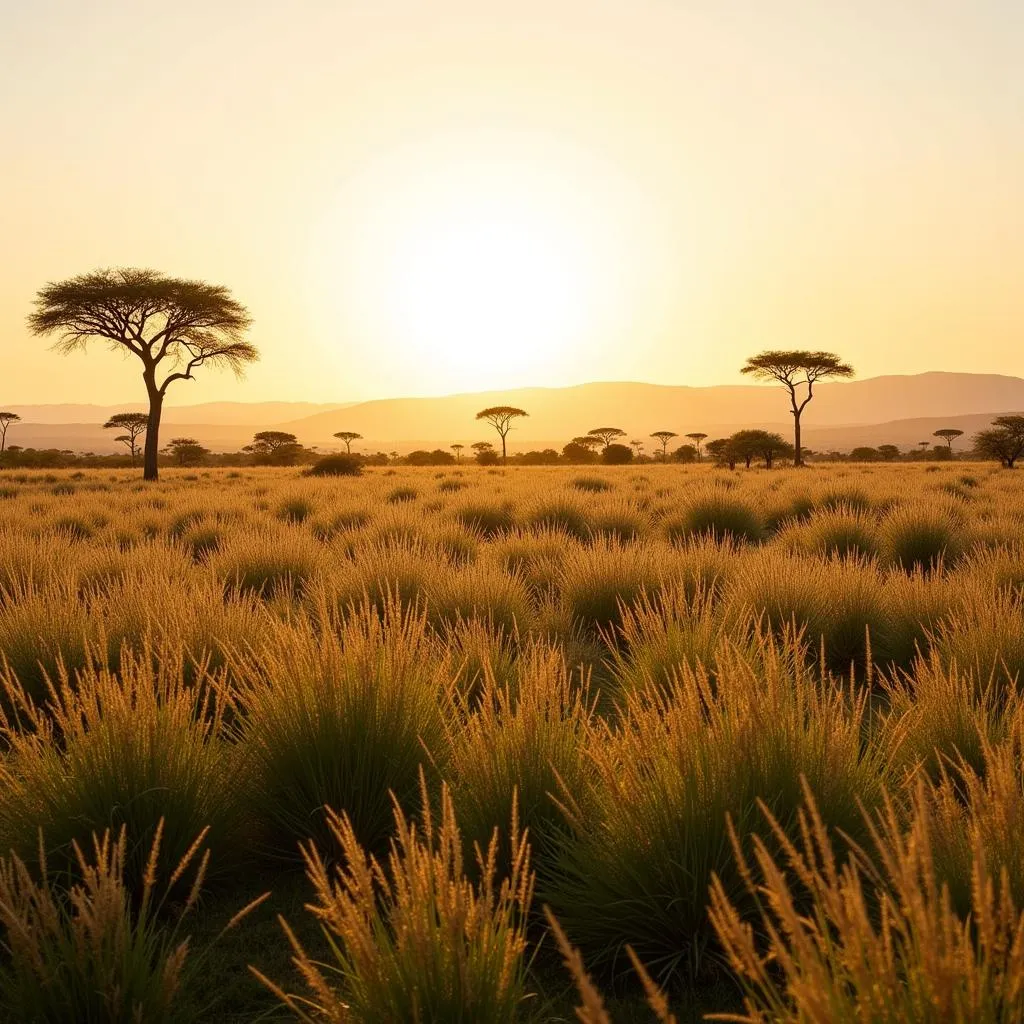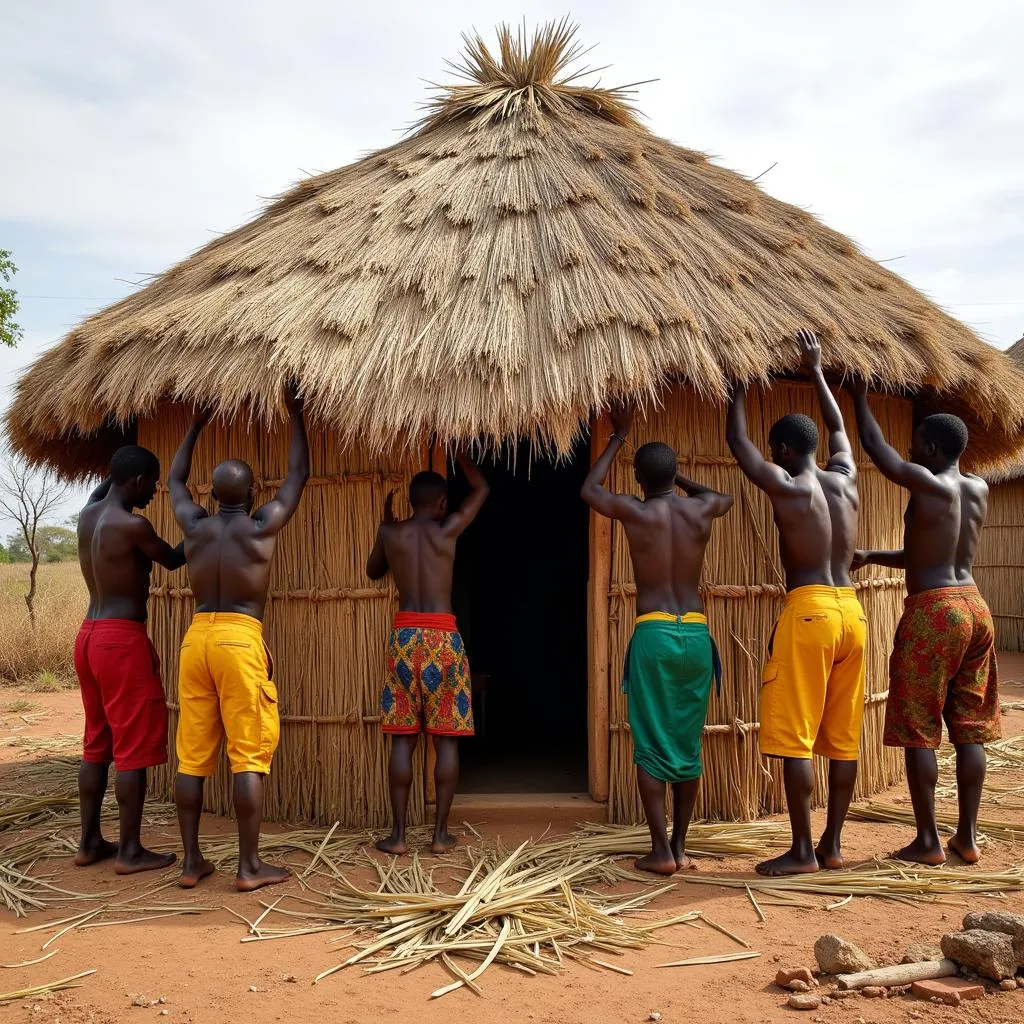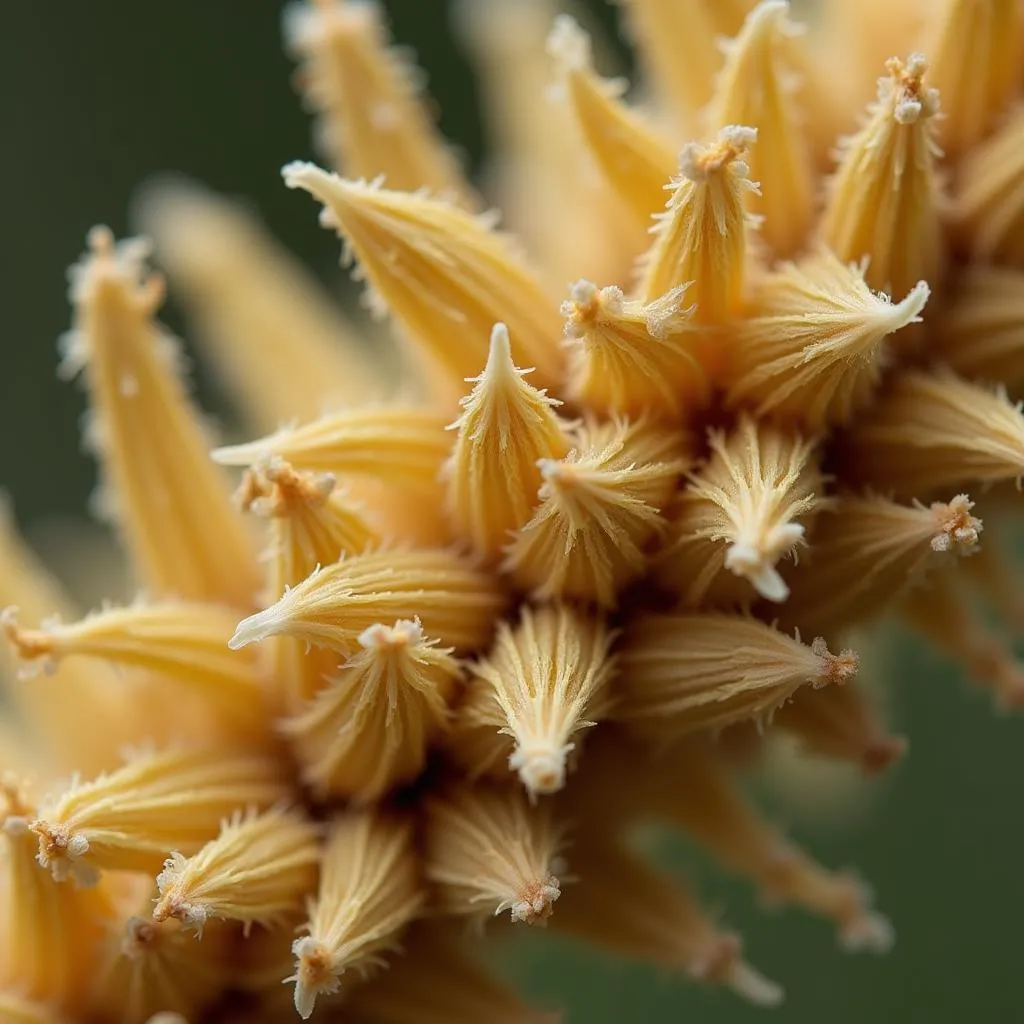The African Bunchgrass: More Than Just a Grass
African Bunchgrass, also known as Cenchrus purpureus, might seem like an unassuming plant at first glance. However, this resilient grass species plays a crucial role in various aspects of African life, from supporting local ecosystems to providing sustenance and resources for communities. Let’s delve into the fascinating world of African bunchgrass and uncover its diverse significance.
Ecological Importance of African Bunchgrass
African bunchgrass thrives in diverse environments across the continent, from savannas and grasslands to arid and semi-arid regions. Its deep roots help stabilize the soil, preventing erosion and promoting water retention. This is particularly vital in areas prone to drought, where the grass acts as a natural barrier against desertification.
 African bunchgrass thriving in a savanna habitat
African bunchgrass thriving in a savanna habitat
Moreover, African bunchgrass provides valuable habitat and food for a wide array of wildlife. Grazers like zebras, wildebeest, and gazelles rely on it as a primary food source, while insects and small mammals find shelter within its dense foliage. The presence of African bunchgrass fosters biodiversity and contributes to the overall health of African ecosystems.
A Versatile Resource for African Communities
For centuries, African communities have recognized the value of African bunchgrass and incorporated it into their daily lives. Its sturdy stems are used for thatching roofs, weaving mats, and constructing fences, providing durable and sustainable building materials. The leaves are often used as fodder for livestock, contributing to the economic well-being of rural communities.
 Community members using African bunchgrass for thatching
Community members using African bunchgrass for thatching
In some regions, African bunchgrass also holds medicinal value. Traditional healers utilize its roots and leaves to treat a variety of ailments, from coughs and fevers to skin infections and digestive problems. The plant’s versatility highlights its deep connection to the health and well-being of African people.
Adaptability and Sustainability
One of the most remarkable features of African bunchgrass is its adaptability. It can withstand harsh climatic conditions, including drought, high temperatures, and infertile soils. This resilience makes it a valuable asset in the face of climate change, offering a sustainable and adaptable resource for future generations.
 Close-up of African bunchgrass seeds
Close-up of African bunchgrass seeds
Furthermore, African bunchgrass is a low-maintenance crop, requiring minimal water and fertilizers. This makes it an ideal choice for smallholder farmers, contributing to food security and sustainable agricultural practices.
Conclusion
The African bunchgrass, often overlooked, is a true testament to the resilience and diversity of African flora. Its ecological importance, versatile uses, and adaptability make it an invaluable resource for both wildlife and human communities across the continent. As we strive for sustainable development, understanding and appreciating the role of such plants becomes increasingly crucial in ensuring a thriving future for Africa and beyond.
FAQs about African Bunchgrass
1. What is the scientific name of African bunchgrass?
- The scientific name of African bunchgrass is Cenchrus purpureus.
2. Where is African bunchgrass found?
- African bunchgrass is native to Africa and can be found in diverse environments, including savannas, grasslands, and arid regions.
3. What are the uses of African bunchgrass?
- African bunchgrass is used for thatching, weaving, livestock fodder, and traditional medicine.
4. Is African bunchgrass drought-tolerant?
- Yes, African bunchgrass is highly drought-tolerant, making it suitable for arid and semi-arid regions.
5. How does African bunchgrass contribute to soil conservation?
- Its deep root system helps stabilize the soil, preventing erosion and promoting water retention.
6. Is African bunchgrass a sustainable resource?
- Yes, African bunchgrass is a fast-growing and adaptable plant, making it a sustainable and renewable resource.
7. What is the significance of African bunchgrass for wildlife?
- It provides food and habitat for various animals, contributing to biodiversity and ecosystem health.
Need More Information?
If you have any further questions about African bunchgrass or other aspects of African Life, feel free to contact us:
Phone Number: +255768904061
Email: kaka.mag@gmail.com
Address: Mbarali DC Mawindi, Kangaga, Tanzania
We have a dedicated team available 24/7 to assist you.
